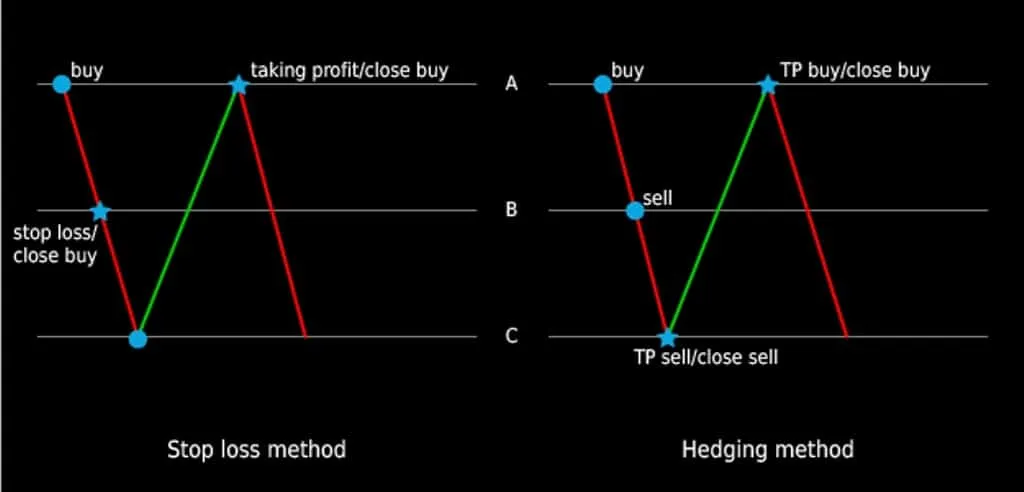Forex Hedging: Protecting Investments from Adverse Market Movements
In the unpredictable world of financial markets, protecting investments from adverse movements is crucial for any investor. Forex hedging provides a powerful tool to mitigate risks and preserve capital in the foreign exchange market. In this comprehensive guide, we will delve into the concept of Forex hedging, explore various hedging strategies, and provide expert insights to help you safeguard your investments effectively. Whether you are a seasoned trader or a novice investor, this article will equip you with the knowledge and expertise needed to navigate the volatile terrain of Forex trading.
Table Content
1. What is Forex Hedging?
2. The Importance of Forex Hedging
3. Understanding Currency Risk
4. Types of Forex Hedging Strategies
5. Factors Affecting Forex Markets
6. Calculating Forex Hedging Ratios
7. Pros and Cons of Forex Hedging
8. FAQs
9. Footnote
What is Forex Hedging?
Forex hedging is a risk management strategy employed by investors and traders to protect their positions from adverse market movements. It involves using financial instruments, such as derivatives and options, to offset potential losses in the foreign exchange market. The primary goal of Forex hedging is to reduce or eliminate exposure to currency fluctuations and ensure the preservation of capital.

The Importance of Forex Hedging:
In the ever-fluctuating foreign exchange market, currency values can swing dramatically due to various factors such as geopolitical events, economic data releases, and market sentiment. Without adequate protection, investors are exposed to significant risks that can lead to substantial losses. Forex hedging provides a critical shield against these uncertainties, giving investors peace of mind and the ability to make more informed investment decisions.
Understanding Currency Risk:
Currency risk, also known as exchange rate risk, is the potential for losses or gains arising from fluctuations in currency values. For multinational corporations, importers, exporters, and investors dealing with foreign assets, currency risk can have a profound impact on financial performance. By employing Forex hedging strategies, individuals and organizations can effectively manage and mitigate currency risk.
Types of Forex Hedging Strategies:
- Forward Contracts: A forward contract is an agreement to buy or sell a specified amount of a currency at a predetermined exchange rate, set in advance. This allows investors to lock in a rate and protect against future currency fluctuations.
- Options Contracts: Options provide the right, but not the obligation, to buy or sell a currency at a predetermined rate within a specified time frame. By using options, investors can limit downside risk while benefiting from potential upside moves.
- Currency Swaps: Currency swaps involve exchanging one currency for another with a counterparty. This can be advantageous when seeking to diversify currency exposure and mitigate risks associated with holding foreign assets.
- Money Market Hedge: This strategy involves using money market instruments, such as short-term interest-bearing securities, to offset currency risk. By simultaneously holding a foreign currency and a money market investment, investors can hedge against exchange rate fluctuations.
- Natural Hedging: Natural hedging occurs when a company or investor has inherent offsetting positions that act as a hedge against currency risk. For instance, a company with both imports and exports in different currencies can naturally hedge against fluctuations.
Factors Affecting Forex Markets:
Forex markets are influenced by a myriad of factors that contribute to volatility and uncertainty. It is essential for investors to be aware of these factors and how they can impact currency prices. Some of the key elements include:
- Economic Data Releases: Indicators such as GDP, employment numbers, and inflation rates can significantly influence currency values.
- Central Bank Policies: Decisions on interest rates and monetary policies taken by central banks can have a substantial impact on exchange rates.
- Geopolitical Events: Political developments, conflicts, and trade tensions between countries can cause significant currency fluctuations.
- Market Sentiment: Investor confidence and risk appetite can lead to abrupt movements in currency markets.
- Commodity Prices: Commodity-exporting countries' currencies can be affected by changes in commodity prices.
Calculating Forex Hedging Ratios:
Determining the appropriate hedging ratio is essential for effective risk management. The hedging ratio is the percentage of a portfolio's value that is protected against currency fluctuations. To calculate the hedging ratio, investors need to consider factors such as risk tolerance, time horizon, and the correlation between the portfolio's assets and currency pairs.
To calculate the hedging ratio:
Hedging Ratio = Value of Hedging Position / Total Portfolio Value
Pros and Cons of Forex Hedging:
Forex hedging offers several benefits, but it also comes with its set of drawbacks. Understanding both sides of the equation is essential for making informed decisions. Let's explore the pros and cons of Forex hedging:
Pros:
- Risk Mitigation: The primary advantage of Forex hedging is the reduction of currency risk, providing protection against adverse market movements.
- Preservation of Capital: Hedging safeguards investments, ensuring that the capital is not eroded by currency fluctuations.
- Enhanced Decision Making: Hedging allows investors to focus on long-term investment strategies without being overly concerned about short-term currency volatility.
- Diversification: Forex hedging enables diversification of risk and can lead to a more balanced portfolio.
Cons:
- Costs: Hedging instruments come with costs, which can eat into potential profits.
- Limited Upside Potential: Hedging can limit gains if the currency moves in a favorable direction.
- Complexity: Implementing Forex hedging strategies may require a good understanding of financial instruments and their intricacies.
- Overhedging Risk: Overhedging can lead to missed opportunities if currency movements are not as expected.
FAQs:
FAQ 1: What is the best time to hedge my Forex positions?
The ideal time to hedge Forex positions depends on individual risk tolerance, investment objectives, and market conditions. Some investors prefer to hedge immediately after opening a position, while others may wait for specific market indicators or events.
FAQ 2: Can individual retail traders benefit from Forex hedging?
Yes, individual retail traders can benefit from Forex hedging to protect their positions from adverse market movements. Hedging strategies are not limited to institutional investors and can be employed by traders of all sizes.
FAQ 3: Are there any alternatives to using derivatives for Forex hedging?
Yes, aside from using derivatives like forward contracts and options, natural hedging and currency swaps offer alternatives for managing currency risk.
FAQ 4: Is Forex hedging foolproof against losses?
While Forex hedging aims to minimize risk, it does not guarantee complete protection against losses. The markets are inherently unpredictable, and unforeseen events can impact currency values.
FAQ 5: Should I hedge all my Forex positions?
Hedging all Forex positions depends on your risk appetite and investment strategy. Some investors may choose to hedge a portion of their portfolio while leaving the rest exposed to market fluctuations.
FAQ 6: Can Forex hedging lead to profits?
Forex hedging is primarily a risk management tool, but it can lead to profits under certain market conditions. However, the main goal of hedging is to protect investments rather than generate profits.
Footnote:
Forex hedging is an essential aspect of risk management for any investor or organization exposed to currency fluctuations. By understanding the various hedging strategies and their pros and cons, investors can make informed decisions to protect their investments from adverse market movements. Remember that there is no one-size-fits-all approach to Forex hedging, and individual circumstances and risk tolerance should dictate the chosen strategy.
In the dynamic world of foreign exchange, knowledge is power. Equip yourself with the expertise to navigate the volatile Forex market, and safeguard your investments with effective hedging strategies.











Discussion